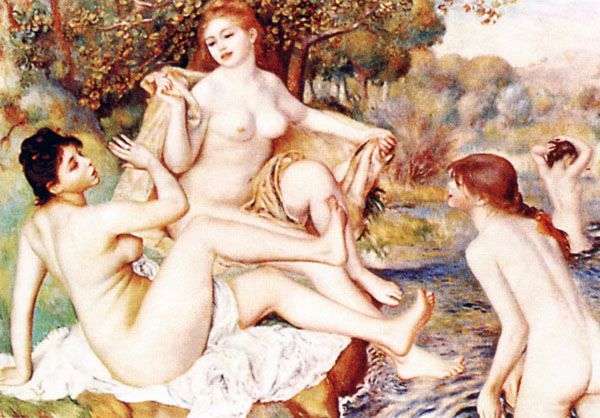
The end of the 1890s is the most tragic period in Gauguin’s life. Returning, in 1895 in Tahiti, the artist dreamed of renewing his relationship with Tehura, but she raised her son Gauguin – Emil already in another marriage, with a local man.
At the end of 1897 Gauguin received terrible news of the death of his beloved daughter. Then the misfortune befell the son of Clovis – he was paralyzed by the leg. It will not be long before the twenty-year-old Clovis decides on an operation that will lead to his death.
It’s hard to imagine what emotions the artist was tormented at this hardest time for him, the fact is known that Gauguin even attempted suicide.
Paradoxically, it is at this time that the flourishing talent of the great master comes to a head. Throughout his creative career, Gauguin was guided by the idea that color is precisely that artistic medium that can convey the finest nuances and moods.
The painting “Bathers” is an unusual work by Gauguin. The end of the 90’s characterizes just the change of color color – in place of bright tones comes a more gloomy palette, “Bathers”, on the other hand, differ in unusual brightness.
The canvas shows the viewer bathers – Tahitian women. Their naked bodies and free poses personify unity with nature, freedom and exotic beauty.
In the performing plan, Gauguin remains true to himself – a planar image of figures, a pronounced contour, the distribution of colors on the canvas by certain significant planes.
The work “Bathers” is included in the list of the most expensive paintings sold at the turn of the 20th and 21st centuries. In 2005, this painting was auctioned off for $ 55 million. The buyer, by the way, wished to remain incognito.
 Mette Gauguin in an evening gown by Paul Gauguin
Mette Gauguin in an evening gown by Paul Gauguin Riders on the shore by Paul Gauguin
Riders on the shore by Paul Gauguin Interior of the artist’s house at the rue Karlsel by Paul Gauguin
Interior of the artist’s house at the rue Karlsel by Paul Gauguin Bathers by Pierre Auguste Renoir
Bathers by Pierre Auguste Renoir Still Life with Sunflowers on the Chair by Paul Gauguin
Still Life with Sunflowers on the Chair by Paul Gauguin Portrait of Madame Gauguin in an Evening Dress by Paul Gauguin
Portrait of Madame Gauguin in an Evening Dress by Paul Gauguin A Wonderful Spring (Sweet Dreams) by Paul Gauguin
A Wonderful Spring (Sweet Dreams) by Paul Gauguin Still Life by Paul Gauguin
Still Life by Paul Gauguin